Don't wanna be here? Send us removal request.
Text
Gaffer Role – 522 Words Self-reflection
I was a Gaffer for both the 'Hair' and 'Office' projects.
I think I’m relatively proficient with the technical side of equipment: building and using it, so I don’t have much to say in that regard. There weren't any challenges, it’s like preparing a cup of tea, you follow a bunch of basic steps and ta-da! My knowledge also came in useful to help other departments struggling with their equipment (i.e. sound and camera).


I also know what each light can do and how to use them relating to the subject and the frame. For ‘Office’ and ‘Hair’, I had time to go to the location, discuss with the DoP and make lighting plans which enabled me to fully visualise, draw out and communicate what needed to be done. All of the above allowed me to improvise enough on the outdoor shoot of ‘Hair’ when we had equipment problems due to a lack of batteries. The main thing was trying to get a light somewhere behind the subject to make the shadows fall towards the camera.
I think the ‘Office’ shoot was the only one where there was sufficient prep that everyone had tasks to do. I enjoyed the professionalism and being able to focus solely on my role rather than scrambling in other departments to get the film made. We had enough lights and equipment that I got to build and do interesting things; the main thing being a boom swing. I brought enough extra stuff (e.g. extension leads, black drapes, adjustable light bulbs etc…) on set to make quick fixes and adjustments as needed. Moreover, having cleared the vision for the film prior, it was the only project where no creative disagreements occurred on-set. Furthermore, Zack had sufficient knowledge that he could give me clear and good directions, I had problems on the other shoots receiving directions misaligned with their actual intent.



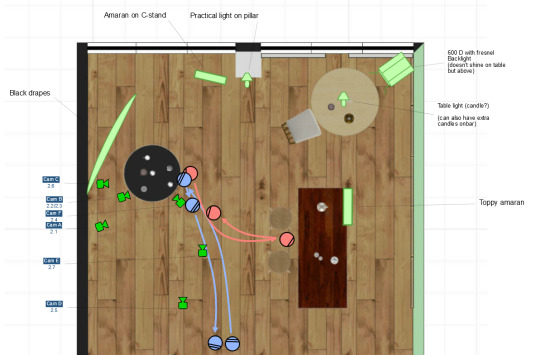
I don’t have many negatives regarding my department. I don’t mean to be a Gary Stu, but I don’t believe I could have done better than I did. Looking at the screening, the concerns I had turned out to be true, making me confident in my skills. The main thing is I still wasn’t able to convince or find a way to force the rectifications on set. I did increase the script coverage on the shotlist for ‘Hair’ but it didn’t get followed on set. For both ‘Office’ and ‘Hair’ I voiced my concerns at the shots being underlit and showed the false colours, but people liked the way the monitor looked. I also think the prologue of ‘Office’ could have benefitted from a small edge light to better separate the two characters.


I would have liked to get a DoP role to have a greater influence on the creative aspect and prioritise blocking and camera movement rather than editing to reveal new information. But I also think that not having a central role made the disheartened at the mismanagement of the film workshop projects passable for me.

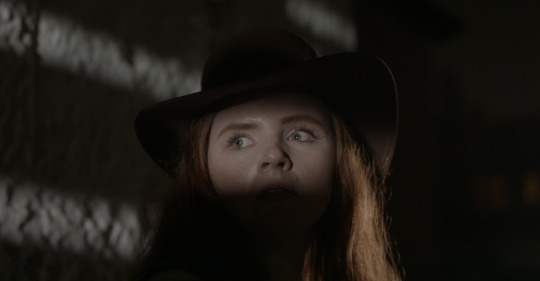
Overall, I have a few shots that look like they belong in a movie so that’s all I wanted.
0 notes
Text
Hair -- Gaffer Role
PREP
I missed the first meeting due to doing prep for the Office shoot.
In class we had a quick meeting with Andrew. He recommended pointing a light on a person's shoulder/clavicle to get soft light on the face and hard light on the body. Moreover, he recommended using a light ball on a stick for night shoots.
We then did two days of prep: One for each location
1/53 Recce/Prep
Me and Holly served as stand-ins while GG and Lola figured the shots out using the viewfinder app. Me & Holly proposed to change the location of the script. We realised the Morningside Wild West location (which was the easiest and best set we had at our disposition) only featured in a paragraph that could easily be cut from the script. Due to Morven already having a lot of set dressing to do in the first saloon scene, we thought it would be better and more interesting to have the second scene unfold in Morningside Wild West rather than in a small non-descript storage room. Lola and GG agreed to change the later part of the script to play in Morningside Wild West.
Morningside Wild West Recce/Prep
Me and Heather served as stand-ins while GG & Lola figured the shots. I discussed the lighting and we came up the idea of using the 600D through the stairs to have the lighting cut through the steps onto the characters. The rest of the lighting was mostly based around the already present street lights.
The relationship with Lola was that she would do the framing and I would do the light as she had less knowledge of how these worked. Although pretty unconventional, I was quite happy to get to be the one choosing where to put the lights and to try and make it look cinematic-ish.
I bought a Chinese lantern to use as a light ball on set.
Using the viewfinder app, Lola made a shot list. Based on it, I drew up a lighting and blocking plan for the scene.



DAY 1
The shoot was a bit chaotic, with not much of an AD and often too many people in the way with no tasks to do. Moreover, the batteries which had been picked up in the morning hadn’t been put on charge and so the shoot was a race against time, losing battery after battery before we physically couldn’t shoot due to the camera having no power. This was stressful and highly avoidable.
This also meant that I wasn’t able to fully use the lights as intended and had to improvise with the nanLites. This further deprived us of a monitor for half of the shoot and therefore I couldn’t see what was in the actual frame. I also saw them film with the viewfinder zoomed in, probably for focus reasons but that meant no one had any idea what the frame looked like throughout the shot and probably explains some of the mistakes that slipped in. One example is shadows in the right pillar, which are very visible in movement.

We also lost some time with bad light direction: I would often be given instructions without being told the intent or goal only to find out the solution had nothing to do with how they attempted to solve it – e.g. move this light here, no maybe the other way round, closer, further back etc... -> reason: there’s a flair -> solution: the camera doesn’t even have the matt box attached.
The lighting in the outdoor scenes was more about working with what we had (and hadn’t), except for under the stairs the light consisted mostly of using the street lamp and shaping the figure a bit with the addition of an eyelight and a minor backlight or sidelight.
I roughly followed the lighting plan I made, and just improvised with necessity. The main deviations from the plan was (1) using nanlites as side or backlights to make the characters pop more, and (2) using a silver reflector to light the faces.



I knew some of the footage was underlit, the few shots for which we checked the false colours used less than a third of the sensor's capabilities. I did voice my concern but got overruled by both the DoP and the Director. I didn’t press my concerns further as lighting it sufficiently would probably have accelerated the decimation of our batteries. I think the footage is overally not too bad although some shots are quite underlit and noisy.

There also weren’t any toilets, so I think we got very lucky this didn’t become a problem.
Rushes & Baffling choices
In rewatching the rushes, some of the creative decisions quite baffle me and the 180 line gets broken badly.
On set, the DoP and Director had trouble getting the actor to stop at the exact right position for a shot. Watching the rushes, I realised that the chosen position for the actor was right behind the pillar, which is the worst option possible in my opinion.

Moreover, during the recce, we had two WS. One conventional and another from a high angle on the other side of the 180-degree line, which looked very voyeuristic. I didn't have too much problem with it as I thought the rest of the shots covered the scene well. I also thought that because we had a CU sitting on the line, we could always use this to cross over to the other side.


However, on set, the CU shot got changed into a very strange-looking OTS shot without consideration for the line. The reverse shot right afterwards was changed to match the side of the line of the CU. However, these are now on the opposite side and therefore, the shots are continuous with the weird voyeuristic high-angle shot, but not the conventional WS. Good luck to the editor.

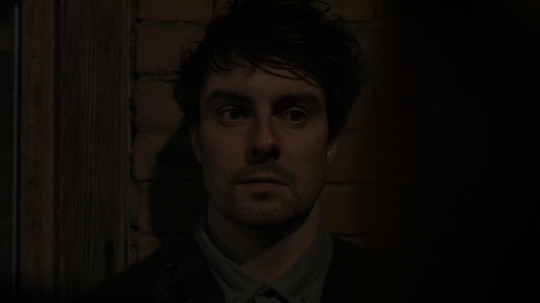




Overall, I think often the frame is overly wide and not put to full use, with the characters being cramped in the middle of the frame with lots of dead space around them. I also think a CU on the weakest element of costuming (no fault of Morven) is maybe not the wisest choice to keep the audience immersed.

I’m really unsure whether the film will be editable, as the director and DoP would cut right after the specific action they wanted in the shot, even though much more of the scene could play in the take. Moreover, there's little coverage around specific actions or moments — e.g. the singles of the characters at a specific stage of the blocking don’t include the characters getting into their positions.
I get that they have a vision on how to edit this film in post, but I think this will really tie the hands of the editor and provide not much to work with if their imagined edit doesn’t not work out. Me and Holly have voiced this concern for the lack of coverage both days to the Director and DoP, but they seemed confident. This being outside of our departments, we didn’t press on it.
Also, I’ve noticed the shots don’t always showcase what’s in the scrip — e.g. Diana walking into the saloon is not covered. I did bring this up a few days before during the drafting of the shot list, and Lola agreed to cover it but didn’t take note and subsequently forgot. I’ve not seen a paper edit beyond the simple tramlines so I’m not sure all the action is properly covered.
I think GG did not know how to stand her ground enough as a Director, and would not always convey any vision she had for a particular shot or whether she disliked something. I remember at some point I thought I could achieve the lighting GG wanted, but the rest of the crew pushed against and so it was taken out.


Similar to how the female character is lit through the gap between the steps. GG wanted a top light from the gaps between the floorboards to light the male actors’ face. Instead, I relied on bouncing the 600D backlight onto his face, which meant the light was coming from the same direction as the camera which made his face look quite flat.
I also think GG got refused another shot she wanted.
Extra Prep
I grew quite frustrated with the production of this film, as two days before shooting, we didn’t have a room. The original plan was to get 1/53, when that became not possible, they turned towards 3/02, but didn’t take the necessary steps to verify whether this was possible or not.
Having a green room or battery base did not even occur to the group.
I pushed for blocking rehearsals in room 3/02 as the layout was quite different from 1/53. I think we got lucky that the room was occupied and we weren't able to do the rehearsal, as this made me force them to find another room (I think room 3/02 is only rentable for private venues). They were still hoping to shoot in it, not knowing if they were allowed to shoot in it, let alone if it was occupied during the shooting time. I insisted in finding something else, we found room 1/09. I booked the room and asked anyone to book an extra room to use as green room, but nothing happened until Morven did it. The new room’s corner is more similar to 1/53 so we followed the blocking plan we had for 1/53.

Based on Lola's shot list I made a lighting plan for the room. My main concern was to always have a backlight throughout the blocking.

DAY 2
Considering Morven didn’t know two days in advance which location we would be using for the shoot and had very little time on the day to dress the set, I think their job is more than phenomenal.
I think the camera doesn’t do its best to hide the set dressing, I think the shots are two wide and show the seems of the set, like the carpet, the wall being very tall, or the fake candles that were used.
I don’t think the lighting is very realistic or subtle, but I didn’t really care for that. I think my lighting achieved my main objective, which was to make the actors shadowy and pretty.


The shoot went mostly smoothly. Once I set up the lights, I just adjusted them slightly between each shot. I did add an extra light on the background extras halfway through the shoot, to make them look better, I don't think the difference with the other shots is noticeably jarring.


I do not like the light pattern on the back wall, but Lola & GG liked it as a practical lantern just out of frame. I also think the bar behind is a bit too bright.
I do feel the production lacks a certain amount of grittiness to make it a proper western. I think the costumes and faces are too clean. Especially because we had some standard Leone CU planned, I was expecting the faces to be sweatened up and textured. Morven got the material to do that, but the director decided not to do that on set. Similarly, the bar table is not sticky or covered with beer stains.
0 notes
Text
Verge -- 1st AC role
I had applied as DoP but I don’t think Derek ever sent my application through. In retrospect, I’m quite glad I wasn’t DoP as the whole film was so disorganised and lacked any prep whatsoever.

Prep
We got a meeting with Andrew a few days before the shoot. He gave us a few techniques with how to go about using the sun as a backlight and doing a sunwrap. Using shower curtains to break the light while still maintaining its edge a bit. Having intricate blocking to hide the sun from popping in and out.
It was quite clear that no one was ready for the shoot; Daisy seemed nonconfident about the project, and I’d not met the director or seen any paperwork beyond the script. Attempts made by Heather to delay it were not possible as no one seemed available at any time the following week. It’s a shame because Heather found a very good location on a dead-end road that although harder and more time-consuming to get there, would have made the whole more believable as I don’t think anyone watching will see that the car park we shot in is meant to be a road.
Camera Assistant Role

My job on set was mostly about building the camera, tripod, shoulder rig and monitor which I’d done a dozen times in class and through various projects before, so nothing too challenging in this department. I followed Andrews's guide to set it up and would then just record the changes made on the camera report. I also kept checking the false colours to make sure our levels were sufficient and mostly consistent.


Because a lot of it was handheld, with no follow focus and the blocking not being known – I proposed to make it all deep focus to save time. I know it’s not a creative decision, but getting the shots in a timely fashion was a priority (for context we had yet to start and were already an hour late when the decision was made). I can’t tell if this was a good call or not as later on, as we were running out of light, I had to open the aperture fully and so the look of the film changed as the shoot went on. I do think it made us save time, but with being tied up in other departments later on, I didn’t monitor the focus well which resulted in some of the later shots to have out-of-focus elements.


On Set
On arriving on set, I checked the sun position (as this hadn’t been done before; I don’t think neither the Director nor the DoP visited the location before the shoot) and discovered we’d be in the shadow of the mountain for half the shoot. However, it seemed that at 2 p.m., the sun would emerge and change the lighting entirely. We got lucky and clouds were in its way when it emerged. Due to how close we were to the mountain, we also managed to stay in its shadow later on.
The first hour was waiting for the director to do god knows what. We started shooting around 11:15, just over an hour late.
I think there was zero communication between Daisy (DoP) and Sean (Director) which resulted in discovering disagreement on set and each not knowing the other person’s plan. The blocking was thought of separately from camera positions and we didn’t even know where the characters would move until after we’d placed the camera for the first set-up and insisted on a crew show.
The production schedule went out the window as soon as we arrived on set. The shots were being decided on the fly:
The first master shot we made got separated into three takes as it was not viable to go through the whole sequence in one take with the blocking and change of camera position.
The floor set-up we had to do twice as we didn’t cover all intended action for this shot the first time around and only realised until after a number of other set-ups.


Once we got started, the director would sometimes just cut a take randomly, forgetting that it wasn’t gonna edit to anything or that some of the actor’s action was still missing for the shot. He’d also asked for extra shots that weren’t in the shotlist and prove to not be doable (e.g. the boot shot, but from the front of the car, through the windshield).
I'm also unsure whether the blocking is consistent from take to take as I suspect there may be lines said at widely different position from take to take.
There wasn’t a process on set, we’d often get the camera in position and checked the levels, only to have to wait around until we found someone or the director to get his actors together so we could go on the the next step and work out positions and focus.
Extra roles: AD, Sound & Light.
I started semi-AD-ing and calling takes as we were taking way too long for any setup and the whole camera crew (Daisy, me and Tom) often found ourselves waiting. I wasn’t familiar with the shots or the action and relied wholly on Daisy to decide what shot came next. I didn’t really have a clue how long any setup was expected to take, what needed covered (the shotlist and script also didn’t have the 8ths as reference) or how far along we were on the shooting schedule, I was just trying to limit the amount of time wasted between takes and get the director to manage his actors to be ready to go for a take ASAP.
I also helped Ailsa set up the lav mics. There seemed to be some interferences with the Lav, but I don't know if it’s from the environment or the equipment being faulty. Being the only other person on set who knew how to operate the mix pre-3, I covered sound on one of the boot shots while she had to go to the toilets.
With David, Nick and April, we tried to do a bit of lighting, especially towards the end as we were loosing a lot of levels, we needed some kind of light to not have the actors show up as silhouettes. We ended up just bouncing a nanlite into a latsolite reflector.

We also build a big black frame to try have a bit of negative fill and create some shadows and contrast on the actors, but I don’t think it does very much.
The footage

I don’t think the shots are gonna edit very well together, we don’t have much in the way of closer shots and the wides are much more shaky than anything on tripod or with the camera on the floor. The blocking is quite intricate and interesting but often doesn’t work in relation to the shots. I think some of the handheld shots make very bad use of the frame. Interesting elements like the bloody car bumper and the body are often just out of frame. Lowering the camera could have included them quite easily. Some of the shots are interesting and very stylised (e.g. body POV), but some other ones look very amateur or documentary. I don’t think these will necessarily edit well together.

I think the shots are too wide in general, they mostly show the same information. I think with more preparation, the blocking is complex enough that doing a proper moving master would have been enough. Although I fear they would look needlessly shaky on a longer lens. Closer shots may have allowed us to shape more of the light on the actors using flags and also better hide the carpark surroundings.
There are some extra shots that we didn’t film (and probably haven’t done so since). The shots are that of quick inserts of the imagined scenarios the characters come up with to get rid of the body (e.g throwing him in a river). I only know of them because Heather communicated them to me orally, they’re not written in the script nor on the shotlist, they also require new locations which we don’t have. Like I said, nothing was discussed prior as although a nice idea, no one knew about them (including the DoP it seems) and I don’t think it would match with the quick whip pans between the two characters we shot for this sequence.
Final thoughts
Overall I think the shoot went better than I expected. I expected it to be a total disaster and it turned up to be a mild disaster. We have enough footage to tell the story even though the footage isn’t always the best or prettiest.
I think I could have done a better job as AC and focused more solely on my department – as we do have focus issues and my camera report is a bit patchy towards the end – but I don’t think we would have gotten a complete film.
0 notes
Text
Office -- Gaffer Role
I got to be a gaffer working with Zak Lang (DoP) for the film 'Office', directed by Tomas Vega.


Meeting 1
During the first meeting, I didn’t do too much except ingest a lot of information about the project.
We had a first meeting to read the script, and how we all digested it on a first read. The script was mostly clear, any objection anyone had brought up, Aimee and Tomas were already aware of and working on it. My main concern was the believability of a hitman website being reported on the news while simultaneously not having been taken down – Aimee and Tomas were already in the process of changing the intro news broadcast so that the issue is not about a single website but a sprawl of them, making them realistically non-containable.
They presented us with the fake hitman website. I did ask the header to be made bigger as I didn’t think it jumped to the reader’s eye quickly enough.
The meeting was more about general logistics and dates than anything specific to my gaffer role. I did get confirmation whether we had wifi (needed for dimmable lightbulbs), how big the windows where, and the floorplan and general layout of the shooting location.
Meeting 2
I had an online meeting with Zack and Tomas regarding the shot list. Unfortunately, I probably wasn’t very useful as it was very hard for me to visualise the shots without drawing or acting out the camera and actors.
Meeting 3
We picked up the equipment and stored it at Zak's flat.
I met with Tomas and Zack and we had follow-up meeting regarding the shotlist, I was more able to understand and resolve some of the miscommunication they also had with eachother.
We had a quick meeting with Andrew which was very useful: The takeaway from this was:
use a boom swing to get a toppy light behind the actors.
make the light less toppy as we got closer with the camera (and avoid the eyes from getting very dark in CU).
cheat the table away from the walls to get more depth.
I then stayed with Zack, we picked up some extra equipment from the film cult and then went on location for a recce, where we drew up together the lighting plan. It was very nice working with someone who understands how light functions and has a vision in their mind. My role was mostly a support role to just listening to him and helping him clarify and communicate his thoughts. I also provided a few solutions to minor problems (e.g. use the window light for a natural backlight).



I made a cleaner version with shot designer for ease of reading.
Scene 1:

Scene 2:

The plan was to black out the windows and use Amaran as a toppy key light.
On Set
The onset ambience was really good and professional from A to Z. Everyone knew what they had to do and was just focused and busy doing their job from start to finish.
The first thing I did on set is build the boom swing with the Amaran. It’s a bit of a MacGyver design using a sound boom pole and as C-stand, but it was very sturdy in reality. After that, I set up the halogen light on the stair case.


Following our plan, I set up the other lights (halogen, tube lights, nanlite) and made some adjustments based on Zak's instructions.
Except for a few minor tweaks, this is mostly how we shot the scene. The main difference was the role of the window light. In my mind, we were going to use that as a backlight, but it proved too distracting, so it was dimmed down to colour the BG rather than interact with the actors.
The staircase halogen was also turned off for the shots of Ava as it left a bright sharp circle on the wall behind her. Rita's set dressing also had to be changed to accommodate for the lower levels of light we were using on the Amaran. Liam Porter blacked out the windows


Although the lighting is still very good, it is a bit harsh on the earlier shots. It was not until I added another layer of diffusion (i.e., duck-taping some baking paper) that we got the effect Zack really wanted.




0 notes
Text
Notes on the Crit (14 10 2024)
Exercise 1: Shards of Her Life
I think the film was received more coldly than I expected, I intended it to be more bittersweet rather than flat-out cold. The transient quality of the space was well perceived, but I’m not sure the one regarding relationships was also perceived — i.e. if you're the lucky one, you're the one who gets to go to friends and family’s funerals; it’s not uncommon for people to build a home together only to drift away 5-10 years down the line.
People felt not invited and described the approach as clinical and detached. I was surprised to hear people say it was documentary-style when the lights were highly manufactured. I think this is due to the sparse sound design and absence of music which makes the whole two minutes very dry. That is also probably due to my editing as each scene only contains very simple actions, once the audience gets the gist of what’s happening, I would in most cases cut to the next scene. I also have feedback from my team that the shots go by quickly, and we never have time to settle in each vignette. I am unsure whether a longer edit would benefit the film as I feel these shots can easily get boring and there isn’t any new information offered beyond what is already shown.
I think the first part needed more in terms of the relationship between the two characters in terms of ‘building a home’ and evoking ‘warm fuzzy feelings’. Someone said the film got ‘almto feel happy and to contrast highly with the latter part of losing everything. We were praised for the set dressing and how the subtle changes felt natural and made the place feel lived-in. The lighting was also commended for conveying emotions nicely.
I’m quite happy with how this film demarcates itself from the other ones. Although I think some of them are very beautiful, they are quite samey in the vibes department with ‘home’ being a place of comfort and mundane routine. I think our interpretation remains more unique.
Exercise 2: TV: Tunnel Vision
Re-reading the brief I realised we were meant to shoot an indoor location, I hope we did enough to overlook this non-compliance to the assignment.
I think the film works better knowing we shot it in a tunnel – The metajoke works better than the isolated film. The cast and crew who went on the journey of filming the damn thing in the tunnel seem to enjoy the film much more than anyone outside. Most of the praise I got from this movie is ‘oh, wow! You actually shot it in a tunnel!’
The concept for the light was sensory overload, like a bright morning light that you never get used to. We shot it cold to match with the tunnel lights, but I ended up not changing it much in post as I liked the feeling of coldness that increased the discomfort in the scene. I think people responded to that and felt that the lights were purposefully too bright and the highlights blown.
I also think people underestimate the editing and sound that go into conveying the emotion. Without the creeping buzzing sound and editing ramping up at the end, I don't think it would be half as effective.
I think that in some of the other films, the music did the heavy lifting with conveying the emotion and that the individual shots themselves didn't matter as much. I do think some of our shots are more utilitarian in conveying the story / showing what happens, but we still have a few of shots that convey the emotion by themselves.
I think we got lucky with the unnatural light fitting for the shoddy set dressing as the very fake aesthetic of the film helps sell the absurd twist at the end. The black curtain was just brighter than I expected on set with no way to make it become a void.
I’m quite happy with the film, I don’t think it looks as cinematic/beautiful as intended, nor is it as funny as I expected, but it does both portrays the emotion dead on, and we did manage to fool the audience regarding the location the film takes place.
0 notes
Text
RUNAWAY -- Notes on 1/100 Exercise

I don’t think I did a very good job as DoP as I don't think what we shot is an editable sequence. Usually, when I shoot something, I am able to edit it in my head to some extent. I was not able to do that, so I knew we were missing some elements.
Shot list:
I sorta knew we probably needed more coverage when the actors go around the bed, but thought the wide shot would cover it sufficiently — In my head the blocking was intricate enough that the wide could function as a moving master.
Once on set, however, the set dressing was too small to frame the actors properly in the wide throughout the take — they appear pushed to the top right corner for a good part of the shot. And so we had to improvise some extra shots on set, which meant we didn’t have time to put enough thought into them.
Moreover, seeing the clips now I realise the blocking may not be appropriate for the space that was dressed. In some shots the camera is sitting on the line with characters overlapping and occupying the same side of the frame simply because readjusting the camera would either show beyond the set or show the wall flat on.
The main example is the most crucial moment of the film: the confrontation between the two characters. It happens in the most awkward place of the set, where both characters are next to the wall and there’s no way to get a light on the other side of the actors. The characters fighting over the bag is also not shot properly as the angle and lens we chose made it impossible to cover the action in a single shot. On set, we quickly rehearsed this part on a wider lens (35mm). When shooting this setup came, Andrew suggested we stay on the 50mm from the previous setup as it might look better and be more stylistically continuous. In retrospect, I should have refused (sorry!) as although maybe more stage-like, the wider lens did cover the fighting over the bag better and Monica sitting on the bed.
There was also a mismatch of intention between me and the director (Rita) on-set, as I thought we were going to end up on a wide shot of Isla (Monica) when Rita had made up her mind on a CU.
Lighting


There were lighting problems that I knew we had, but I had no real clue how to fix them. The Amaran light was sufficient for the characters in front of the bed, but I didn’t know what to do with the light once they went on the other side. I was trying to elevate the levels, and doing so mostly using the Amaran key light, which only increased the harshness of the light. I forgot about some basic techniques such as using a ceiling bounce to elevate all the levels at once.
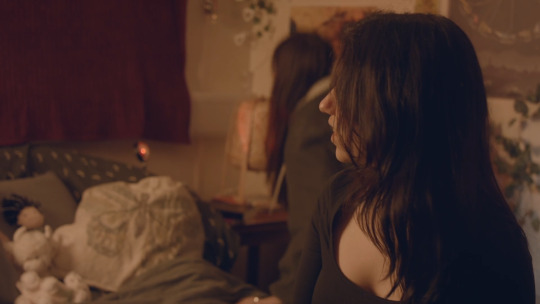

This meant that character's face would go from very light to very dark depending on orientation. The lighting still looks pretty good thanks to the Amaran ability to make the shadows very soft and the basic reflex of checking levels for every shot.
I would have liked a hair/rim light to separate the characters more from the BG and one another, but had no idea how to achieve that.
I also don’t think I expressed my intentions with the window frame properly as I wanted it to be a big texturing light on the characters rather than a detail in the BG. It was a bit too late to change the cookie when I understood how to fix it – i.e. making the whole cookie frame bigger and closer to the bed. How I wanted the light to show up is sorta seen in some behind-the-scenes still when people walk closer to the light.


Being camera operator
I don’t think I like operating the camera while being DoP, as just tracking the actors and making sure no bad bits of the set design show up in frame means this is all my brain is focused on doing, meaning I'm unable to focus on the composition and how the shadows appear on the faces.
The lack of proper camera/blocking rehearsals meant that I was also unsure of whether the camera should follow actors or stay in position at certain moments during the shoot.
All and all I think we should have made a blocking rehearsal with the viewfinder app to figure out how every shot would actually play out. I also think spending more time to align intentions would have been helpful as whenever the need for a decision on set came, I did not know which choice would correspond to Rita’s intention.
0 notes
Text
Exercise 2:
Actor:
Charlie did a casting call for the short, I thought it could do with some improvement as we needed
I asked Charlie to do a casting call, and she did (left), but I thought it lacked design, allure, and some kind of punch to really sell the project to actors. Based on her design, I redid a version (right) and sent it to the acting course.


From this casting call, two people answered me. I decided to go with the first one who answered: Fraser J Henderson.
I didn't bother making a script and just sent him an outline of the character's actions:
Man is sleeping on a bed. He jumpstarts into wakefulness, then his body remembers the alcohol or something worse.
He picks up a mug of coffee and takes a sip. It's cold and disgusting, he spits it out.
He sees his TV and looks around the bed for the remote, but can't find it. It's at his feet.
He's too lazy to bend down a grab and so manages to drag it up to him with his feet.
He tries switching the TV on. It doesn't work.
He tries repeatedly, taking the remote batteries in and out and smacking the remote. No changes.
He rage quits and throws the remote which shatters in what is revealed to be a tunnel. The TV is plugged into nothing.
I did warn him about the conditions under which we were planning on shooting and that he should bring extra layers to put underneath the pyjamas -- he seemed fine with everything.
Set Dressing/Costumes:

Most of the set was provided by April. I provide the mirror, the lamp, the drying rack and the bible. I got a pair of Pyjamas from Amazon and brought a thermos of cold coffee to set.






We set up two tarps, one for the equipment and one for the set. We used extra tripods and high-vis vests as traffic cones to warn passersby. To save time, we decided not to cut but simply pause the action when bikes came through.

On the set, we set up the black drape attached to the Manfrotto skylite as background. This was taken off for the last shot to make the transition to tunnel more natural
We got very lucky with the shoot as we found a couch while we were setting up. This made us save a lot of time as the bedframe April provided still needed to be assembled and dressed. This was also closer to how we originally intended the film to be.
We also found a crate of empty bottles nearby and helped ourselves. As we were starting to shoot, we thought the scene lacked underwear to sell the seediness so me and April took our socks off and added them to the set.
Lighting:

Using two C-stands and black flags, Nick and April blocked out the closest ceiling light. We placed one 600D on each side of the drape, pointing down on the subject and only ended up using the left one for the shoot. The rest of the light is just the ambient light from the tunnel. April was holding a black drape or a black umbrella as a negative fill on the shadow side of the actor.
The lighting stayed the same throughout the shoot, with only adjusting the 600D's output slightly and changing the position of the negative fill.

Although I'd like the lighting to be a bit prettier and 'cinematic', it does work in conveying the emotion and looks very much uncomfortable.
The shoots were mostly following the shot list, some had to be slightly adjusted.
Shot #1


This shot was made closer and more dutchy to better hide the set dressing and accommodate the couch.
Shot #2


The TV reflection shot was not possible to do on set (the TV was too mat and so didn't reflect anything). This shot was a replacement, acting as a neutral-looking WS.
Shot #3


Shots #4



This shot is probably the one that looks the closest to what I put in the storyboards.
Shot #5


The shot was made closer to better hide the set dressing and the tilt was made more prominent to showcase the totality of the action.
Shot #6




Originally intended to be part of Shot #1, this was changed to a new shot starting with a CU to better match with Shot #6 and enhance the reveal with a crash zoom-out.
The slight Dutch angle is due to the awkwardness of how I was holding the camera for this shot. We decided to turn off the 600D during the take as it did a strange spot of light after the zoom-out, we didn't exactly nail the timing so you can see it dim after the pan/crash zoom has ended.
Shot #7, #8, #9 etc...

We also did a bunch of pick-up CU shots to facilitate the edit if needed. I did end up using the one of the Hands smacking the remote, which brings the final film to 7 shots, not 6... oops :(.
Editing:
Rushes review sheet:

The edit makes heavy use of motion stabiliser to better blend the tripod shots and the handheld ones. Moreover, one of the shots is digitally zoomed in to make it appear more different from the following one and the cut less jarring (cut between shots 4 & 5 just before the character finds the remote).
Except for the ending sound of the remote smashing and the ambient sound of the tunnel, all the sounds in the scene have been replaced. We recorded foley with Heather, which was a bit of a tedious process as it involved recording sounds and then editing the ones that fitted and re-recording the ones that were still missing.
Because the wind was visible on the character's hair, I decided to add an AC sound effect. This also helps build tension and better hide the shoddy sound design.
0 notes
Text
Exercise 1: Production and Post-prod
Cinematography
We tried to set up all the lights for the shoot at once so that we'd only have to turn on/off some light and change the settings between shots and not have to move everything around.
The first thing we did was set the camera in a position we liked and close the aperture to achieve a deep focus. Below is the ad hoc lighting plan detailing all the lights we placed in the flat. Except for the two 600D and a general idea of what each shot would look like, I had no real idea how to place each light until we worked it on the set with April and Heather.

Shooting Plan for Each Shot
Here is the lighting plan for the shoot we did following the shooting order. Because we were tweaking and adding some extra lights for different shots, I think the lighting got better as the shoot progressed.
As we set up each shot, I would then insist on checking the false colours on the monitor to make sure our shadows weren't crushed and we had enough levels in the frame.
Shot #1 & #8:
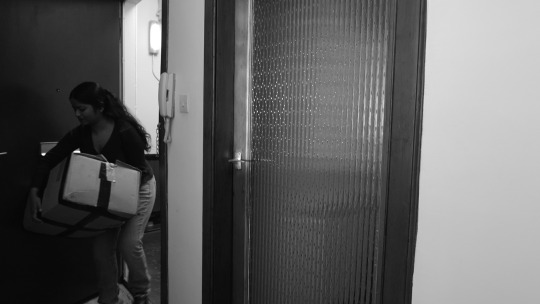
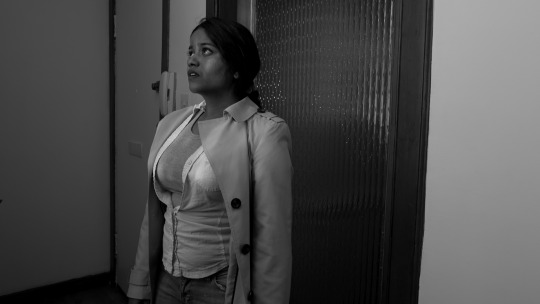
We shot the first and last shot first as the set needed to be empty for them.
April's idea was to bounce the Amaran onto the ceiling to have a very even and soft light mimicking the ceiling bulb (the ceiling light bulb was taken off). I made her tilt I down so that the actor's faces would be brighter. A nanlite bouncing on the ceilling was used to elevate the light levels and not crunch the shadows in the dark shots (the barn doors of the light actually made their way into a shot, I will mask it when I have the time).

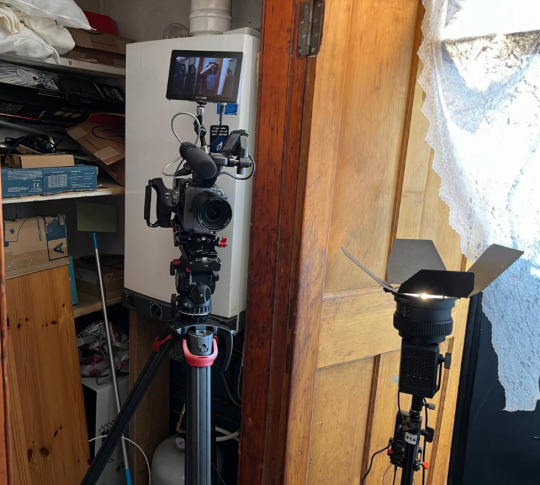

We had taken the ceiling light bulb out, so it was to Heather to turn on/off the Amaran in synch with Arzeneira flicking the switch.
The EXT. 600D was just bouncing on the ceiling to have a full soft light on the outside.
The window (which is not as visible as I'd like it to be) was made using a 600D at the end of the corridor and using a flag and curtain, we made a cookie for it. I think its levels needed to be increased, we should have checked the false colours more regarding that light.
The plan was originally to change this light's position to imply different times of the day, but this was discarded on set as it would have taken too much time and we were very limited regarding where we could place the light and cookie frame in a manner that looked good.

Shot #4:
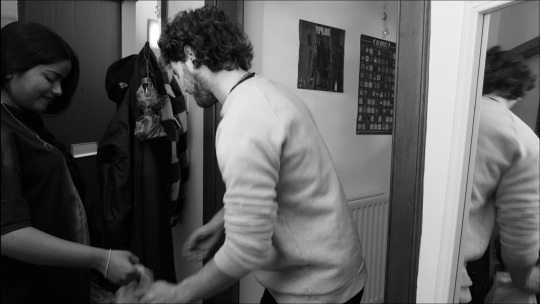
This set-up is very similar to the previous one with the addition of light coming in from the living room.

Shot #5:
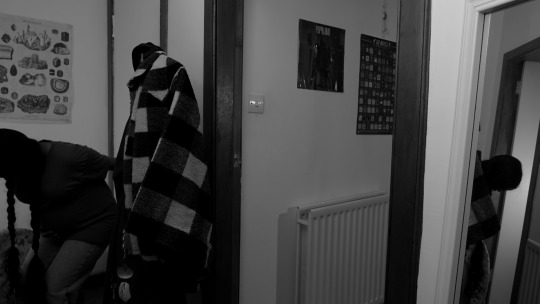
We added a diffused nan lite in the bathroom to illuminate behind the actors and make them stand out more from the background. We also added a flag on the wall opposite the coat hanger to have less bounce and make the shadows on the actor darker when the cross this space.
This shot is meant to take place in the evening so the 600D window light was turned off.

Shot #2:

The Amaran was turned off and the 600D (fake window) was turned back on to mimic early morning sunlight.
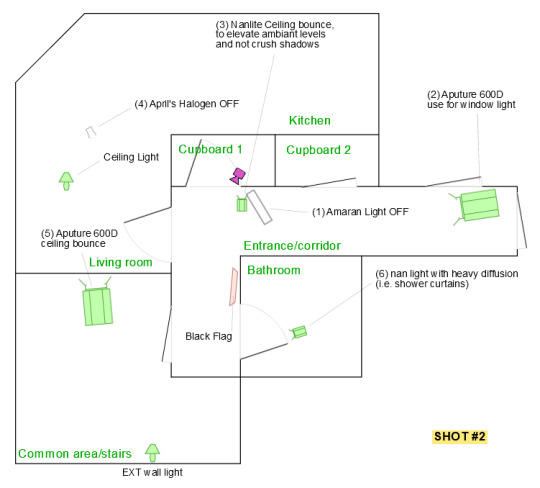
Shot #3:

Another nanite was used in the bathroom (facing the front door) to light the characters from the side. It was diffused either by using baking paper or the shower curtain.
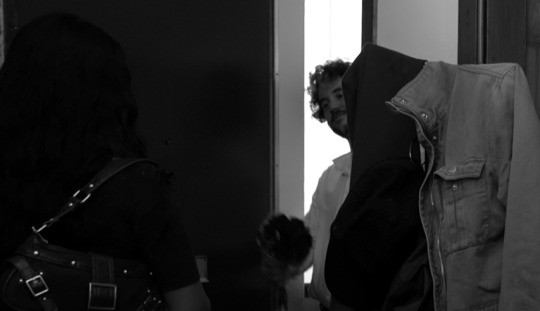
The entrance 600D was bounced against the opposing wall which makes the background beyond the entrance door very overexposed in retrospect. Moreover, the ceiling bounce used in previous shots would have helped light her and separate her from the open door.

Shot #7:
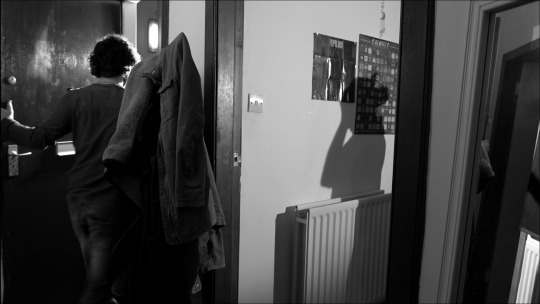
The shoot was achieved by having the 600D just out of the door frame, blasting inside. I was standing with a black drape against the wall to prevent the 600D light from bouncing on the wall and light the subject.
Charlie was kneeling down behind me with an oven mitt she had to quickly place in the corner of the door as soon as the actor opened it to allow the dumb bouncing seen in the film.
April's halogen light lacked the power to give the proper shadows on the wall and so was replaced by the bathroom nanlite for this shot.
The Nan lite ceiling bounce was maintained to not crush shadows in the corridor.

Shot #6:

We turned the Amaran light off to dim the whole shot and enhance the window light for that shot. We changed the diffusion on the bathroom nanlite to help further define her facial features with shadows and contrast.

Directing:
Once the lighting was set up, we would just walk through the shot with the actors and focus on the beats and motivation.
Having no dialogue made it fairly easy to direct, Azeneira was very natural with understanding what each shot required. The main element of directing was actually blocking her positions in the frame.
Conor is a non-actor and so does come across a bit, he tends to do big gestures as if walking on the moon. But considering how last minute we got him, this isn't much to complain about.
Editing:
We shot the film on Sunday 13th evening, and I started editing at 1am on the 14th. Even though I knew ioot was gonna be simple to edit, it is still very bare-bones sound-wise.
Because of the awkward position of the camera and the space me and April had to monitor it, we did bump it probably between every take. As a result, I have to zoom in slightly and readjust every clip in post so that they match (or at least don't mismatch noticeably). This didn't have too much of an effect except in shot #6, where Azerneira's head gets cut off from the frame, luckily, the reflection in the mirror on the other side still has it.
All the sound used was recorded by the microphone connected to the camera. All I did was diminish the volume during the loud noises and add the buzzing sound recorded on set.
Some of the lighting changes were also a bit cheated in the edit such as the change of brightness at the end when Azeneira switches the light off. The timing of the keys and lock sounds were also modified to sound better and happen quicker than they do in the take.
We had an issue on set with the sound of the bathroom fan that we couldn't turn off. I tried to EQ it out in Da Vinci, but it is still very much audible in some of the shots. I may have another go in pro-tools later on to clean it better.
I think the movie turned up pretty well, except it may need music as on rewatch it is much dryer than I anticipated.
0 notes
Text
Exercise 1: Pre Prod
Location:
We had trouble finding a location, as finding a good-looking door and having the camera be on the stairs as well as blocking access was a big issue.
Heather proposed her flat, but we could only shoot from indoors. In retrospect that probably made our shots more interesting as I couldn't find any easy ways to dress and occupy the edges of the frame with the single door from outside. I also think this let us do much more with light: use silhouettes, shadows, distortion through glass etc...
Actors:
I ask Arzeneira Deepsri to get involved as I had already worked with her on another project.
I did a casting call and sent it to the acting course but no one answered. I think this lack of success was due to multiple reasons: (1) the casting call was very last minute, (2) the character was very much a side character, (3) the brief included the 'drunk escaped' scene, which is a tough sale for an unpaid student project.


Luckily for us, Conor McCloskey, a flatmate of Heather agreed to do the part.
Shot 3 (Drunken Escapade) was changed because both Arzeneira and Conor felt uncomfortable doing it, and we had no sort of intimacy coordinator on the production. I still think it would have made the love arc more unique, but I perfectly understand, as I myself would not like to act it either.
Cinematography
With April we put down ideas for how each shot would be lit.


Because I didn't have the time to do a location recce, I wasn't able to properly conceive in advance, Heather did provide us with a floorplan which greatly helped.
Production design:
Clothes: I made some clothing indication and them Arzeneira, Heather and April each brought what they could that would fit. I bought a baby bump from amazon.


We made use of stuff Heather had in the flat (baby seat, mirror, posters), I brought the shoe rack and we built the coat rack using a tripod, an upside-down coat hanger and some duck tape (on the left, probably the best take which couldn't be used due to shoddy set design).


Between takes, we would swap/add clothes, shoes and add an extra poster for the shots where the man is supposed to be living with her.
The clothes were all brought in by Arzeneira, Heather and April following a rough guidelines I had put on the brief. Conor provided his own clothing too.
Other props included the bin, the work files (and PC), a screwdriver, shopping bags and the boxes. On set, I made sure to put weighty stuff in all she has to carry as I wanted the lifting to be credible.
0 notes
Text
Exercise 1 & 2 Videos
Exercise 1: Shards of Her Life
vimeo
Exercise 2: TV: Tunnel Vision
vimeo
0 notes
Text
Parasite (2019) Cinematography article review
These are the points I took from the article '‘Parasite’: Shooting Bong Joon Ho’s Social Thriller Through the Lens of Class Divide' by Bill Desowitz, publish on IndieWire the 15th November 2019.
Hong Kyung-pyo talks about how the amount of natural light differs between the two families.
The Park's house is spacious and has generous sunlight to light it. Even when dark, they have soft high-end indoors lighting.

In contrast, the Kim's house can never see the sun directly due to being a semi-basement. Like the secret basement, the Kim's house is lit with low-end greenish fluorescent.

Ascending and descending
Hong talks about the transition between different spaces using stairs. From the rich Park environment to the poor environment of the secret basement and the Kim's house. Hong says: 'Walking up some stairs, you become infinitely elegant, while walking down another, you fall endlessly or enter into an ominous mood.'


The first time Ki-woo walks to the Park's house, he's literally blinded by the sun as is the audience.

The transition down is most clearly seen in the downpour sequence. The rain seems ethereal and romantic from the Park's window. But the further down the characters go, the more it becomes a deluge.


Hong and Bong used a variety of techniques to enhance any source of water and make the downpoor look stronger.

The shots in this sequence make use of backlighting water streams or rain to outline it and make it pop from the background.

There are people throwing buckets of water left and right in the street. Although the action seems diegetically useless, adds some sort of violence and enhances the feeling of flooding to the scene.

Bubbling of water on the streets, to water in movement to the shot.
0 notes
Text
Exercise 2 -- Shot list
After the location Recce, I drew a floor plan of how I think the general space would be arranged.


The main set-up I want is a harsh top light, I think we can hide the c-stand behind a black drape using a Manfrotto skylite.
I had a discussion with April regarding how she envisioned the shots and sequence. In a classroom, we blocked the scene and camera position movement.
From this conversation, I made some storyboards and put them into a shot list. The shots are quite close or from a high angle to avoid divulging as much of the background as possible. Some of the shots still have to be detailed some more with the team.
Out of the discussion with April, I took out a CU of the coffee cup as I don't think it's important enough to warrant having its own CU.
0 notes
Text
1/100 Exercise -- Lighting Plan
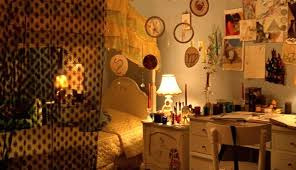
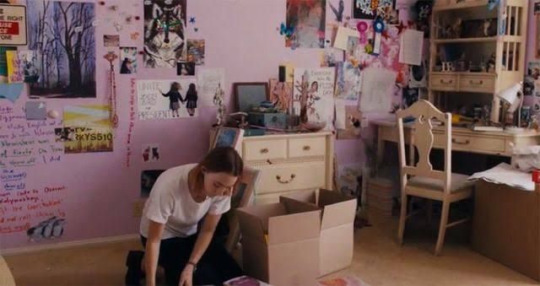
Since its inception, the team was interested in having some sort of light projection from a window. I think that having some blueish backlight would make the characters stand out from the background.

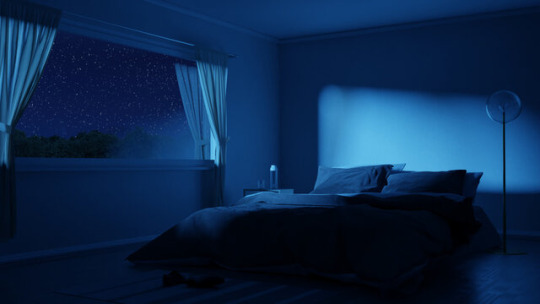
The first plan was to use the classroom windows to light the scene.
However, after a meeting with David, I realised using the windows would not be practical as we are going to shoot in daylight. We made the decision then to hide the window and create an O.S. window with the use of a cookie and drapes and an Aputure 600D light from a distance.
The exact orientation of the moonlight is to be determined on set as it could also be projected more towards the left wall and serve as a side/backlight on the actors.

There will be two practical lights, one in the corner of the room and one on the desk. The desk lamp will be boosted by an Amaran panel and used as a key light for the scene.
0 notes
Text
Film Workshop Applications
I applied to two films as Gaffer or Dop:
0 notes
Text
1/100 Exercise
We got given the task to shot a 1 minute short in 1/100 but with the room being dressed up as a bedroom.
In class, we came up with the basic characters and situation and got up to do a rough outline/draft for the 1-minute story.
Situation: Kirsty has come to pick up Isla to run away with her that night, but it's more than apparent that Isla is now chickening out.
The scene starts towards the end of the argument, as time is running out for them to settle it and make a decision.
Kirsty:
Want to leave, she’s a free spirit.
More eclectic, not so well kept, stuff from charity shops
Colour: green and black and grey
Isla:
Ila is compliant, she’s not happy but satisfied with the situation, moreso scared that it can get worse.
She has religious parents and is still very much a model girl in their eyes. She’s closeted from her parents, they don’t care about it enough to ever have noticed anything about their daughter.
Colour pallet: dark blue, pink and oranges -- Isla dresses very much like the girl next door, nothing striking about her appearance, she doesn't want to stand out from what people perceive of her.
Unlike most people in the group, I see Kirsty as the protagonist of the story as she's the one initiating the situation and having on-screen change (she goes from wanting to convince Isla to go with her to deciding to go regardless of Isla's choice.)
Production design:
This isn't really Isla's room, more the room her parents want her to have. The room is an amalgamation of childhood, objects and toys that Isla still clings to.
Blocking plan:
We established the blocking and shots to be filmed in class.
David did a camera plan. Then with Rita and David, we figured a blocking plan.






Kirsty is kneeling to the suitcase, Isla sits on the bed.
Kirsty goes behind the bed to the side table to fetch the keys, Isla follows her and blocks her path.
Kirsty throws the keys, pushes through Isla and leaves the room.
Isla sits on the bed, alone.
Script & Shotlist:
Rita did a one-page script, I divided it into 8th. I did a shotlist.
0 notes
Text
Kit List & Risk Assessment:
I did a kit list and RA following the Recce with what I thought we may be using and the basic logistics we'd talked over as a team.
0 notes
Text
Recce: Innocent Railway Tunnel
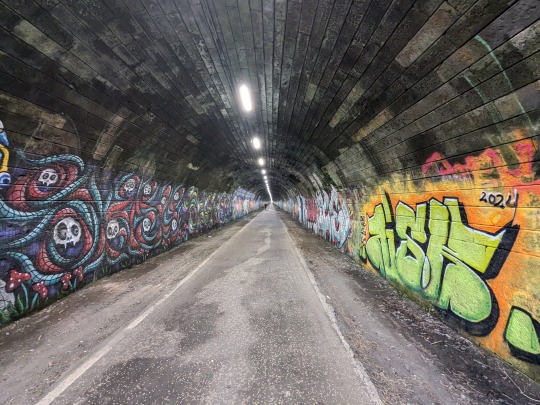
I filled up a recce at the location on Thursday 1st of October 2024:
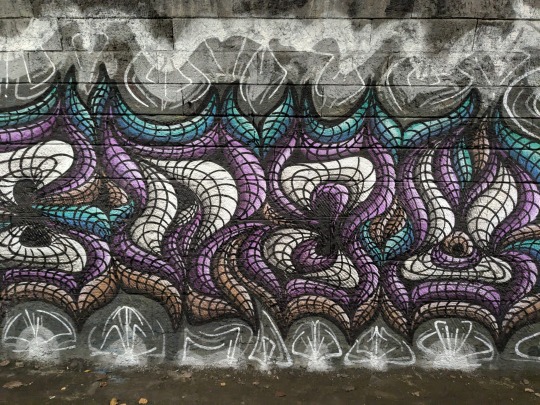
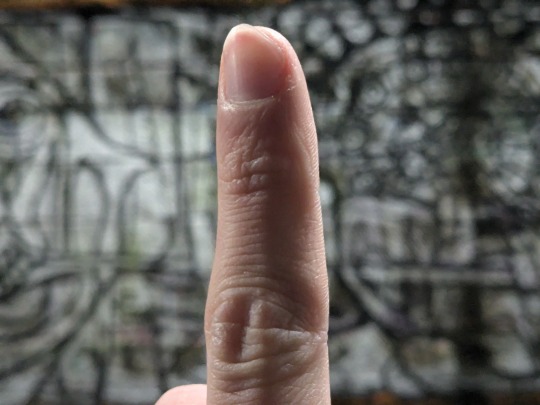
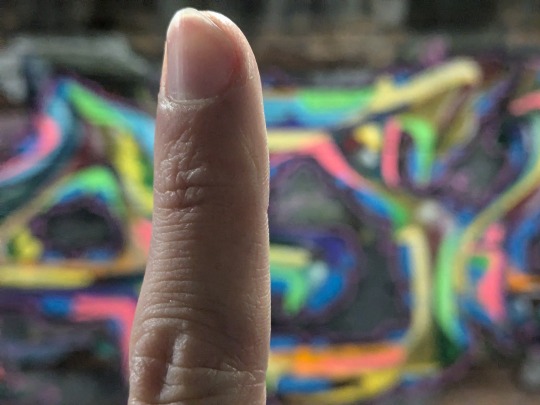
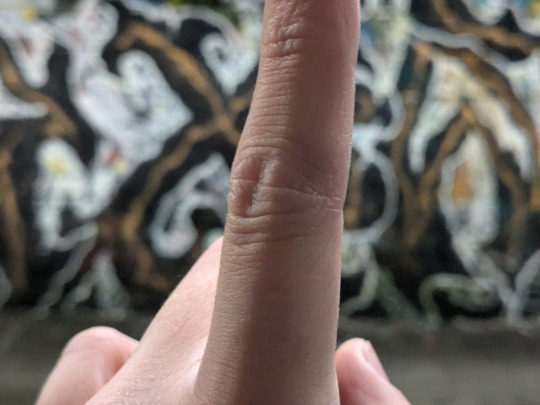
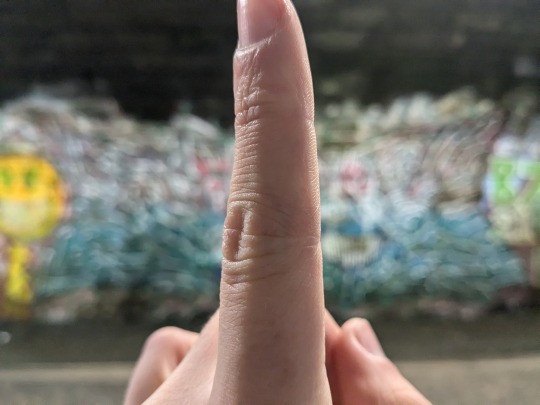
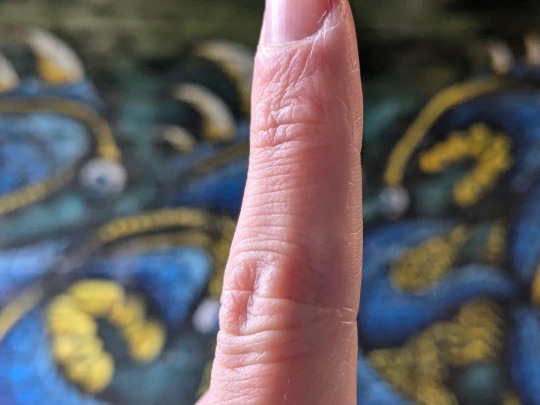
I was looking to see if the tunnel wall could be mistaken for wallpaper when out of focus. I don't think it will be possible and therefore plan to use a Manfrotto skylite covered by a black drape to make the background black.
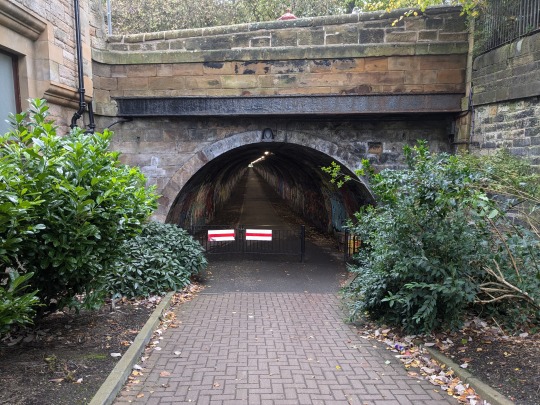
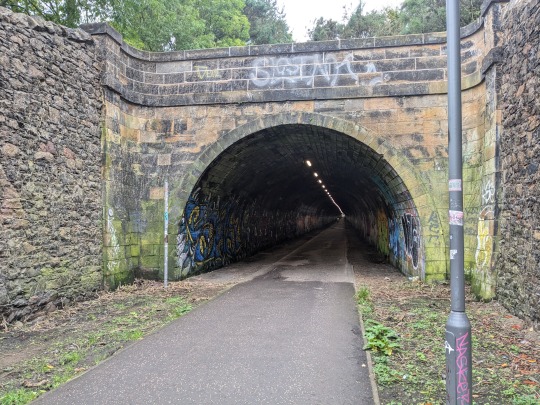


Of the two entrances of the tunnel, the east one (left image) can face the sun directly between 8 and 10 am.
The lighting in the tunnel is mostly top light from the ceiling tube lights with a decent amount of bounce from the floor and walls.
The tube lights are quite dim compared to the sun so using it as a side light was considered. This was later abandoned as this gives the shooting only a two-hour window and the weather forecast is rain for the shooting day.
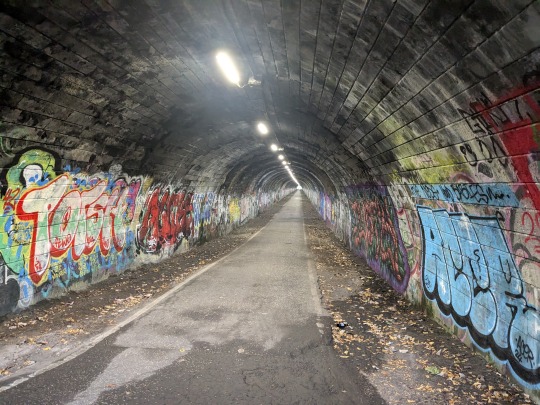
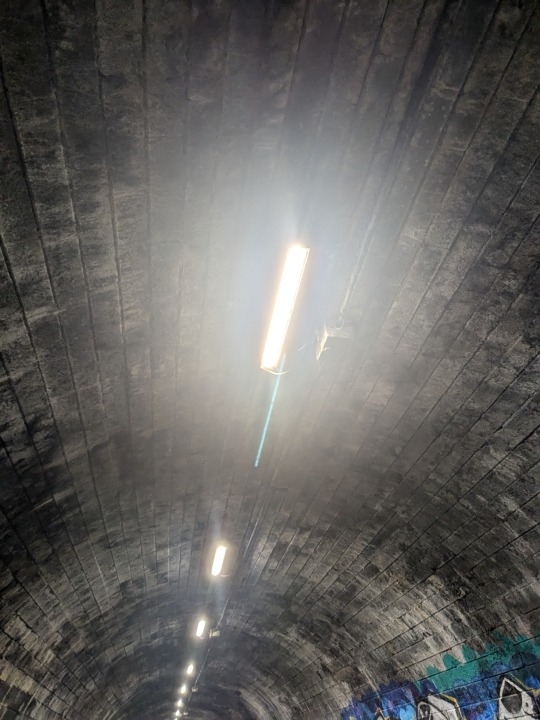
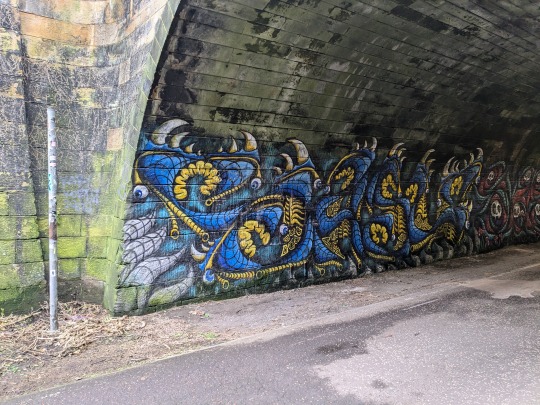
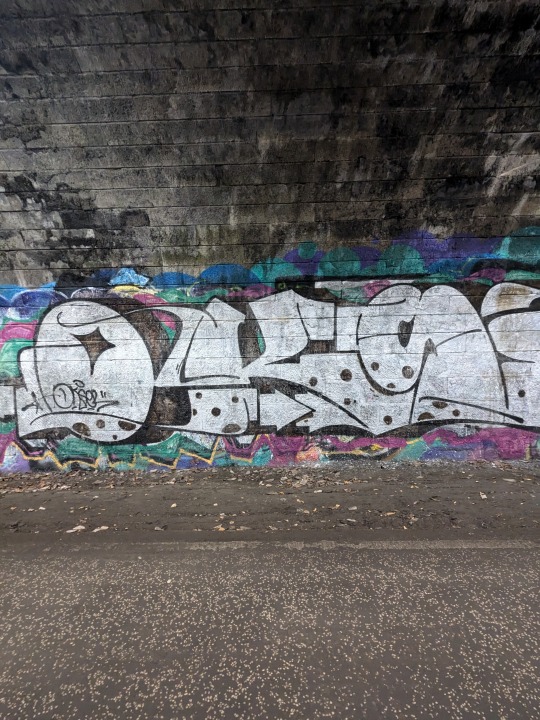
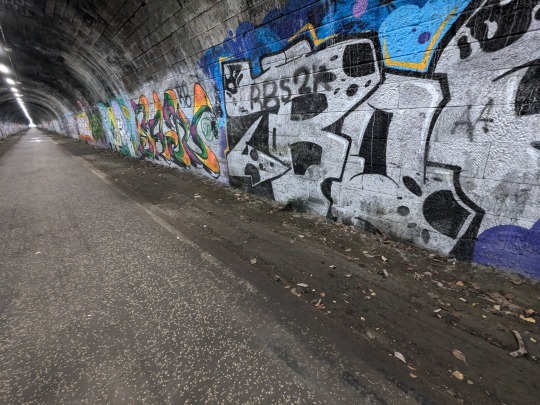
Other shooting notes:
Sound: the wind, resonance in the tunnel and cars passing nearby make it hard to use on-location sound -- the sound will probably be rerecorded inside and dubbed in post to help sell the deceit of it being indoors.
There is considerable bike traffic so high-vis vests, traffic cones and watchers will have to be used to slow down and regulate traffic.
The wind makes the grass flutter, it would therefore be better if the chosen actor has short hair to maintain the illusion of an indoor space.
The scene requires the actor to be in a pyjama which may be very cold for the actor. Sufficient clothing and heating must be provided between takes.
0 notes